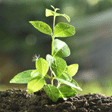- Home >
- Our Actions >
- Ambassador report
8
Comments
Good News from UAE on World Migratory Bird Day |
|---|
|
by Aaditya Singh | 13-05-2017 21:11
|
|
Houbara Bustard saved from extinction in UAE and surrounds Report (on World Migratory Bird Day-10th May) to highlight efforts by UAE Description- The houbara bustard is a shy bird that has adapted to arid conditions with little vegetation and is found in stony and sandy desert and semi-desert regions. A striking bird resembling a turkey in shape, it has a slender body, with a tuft of hairs in the centre of the crown, and long plumes of feathers drooping over the neck, the uppermost feathers being black while the lower ones are white with black tip. The body is pale sandy-buff in color, with darker brown lines and mottling, while the underside is white. Large areas of black and brown occur on the flight feathers and the long, square tail is sandy-chestnut and patterned with four distinct blue-black bars. Male houbara bustards are slightly larger than females. Found in the deserts of Russia and the Middle East, around the Arabian Peninsula, there are three subspecies of the houbara bustard. According to the International Union for Conservation of Nature (IUCN) Red List, in the mid-1990s, this species numbered at least 9,800 individuals. It was classified as 'vulnerable' on the IUCN Red List 2004, but thanks to captive breeding and release programs, the numbers have been increasing steadily. The Houbara Bustard is an integral part of UAE's local heritage. Apart from being an important link in the food chain, being the main prey for falcons, the houbara is essential to the art of falconry that is intrinsic to Arabic culture. Thus besides other environmental factors, the government considers it important to save them as part of preserving the local culture and desert physiognomy for the future generations to come. There are various reasons for the decline in houbara population. Rapid urbanisation of UAE caused disturbance to houbara habitats. Over-hunting and poaching has thus been compounded by habitat loss and degradation, as a result of tourist activities and development, overgrazing, sand extraction and road development, (according to www.birdlife.org). Moreover, flocks of Houbara Bustards migrate from Asian countries to the warmer climes of UAE to escape harsh winters. Though it is an adaptive mechanism for survival, migration is also a perilous journey. It exposes birds to a wide range of threats, many of which result from human activities. Loss of habitat during winters and also of stopover sites is a huge threat to migratory birds as they depend on a range of sites throughout their flight. Furthermore, flying across borders with different environmental policies, legislation and conservation measures can make their migratory routes more difficult than usual. The first efforts to start breeding this bird in UAE were initiated in the Al Ain Zoo with a group of birds that came from different countries. The programme succeeded, with the hatching of the first chick in 1982. This led to establishment of 'National Avian Research Centre' (NARC) in Sweihan in 1989, to carry out breeding in a more scientific manner, focusing on the Asian houbara species, which migrates here from central and north east Asia in winter. NARC started its breeding programme in 1993 with some birds handed over from private collections and achieved their first major success in 2001. The International Fund for Houbara Conservation (IFHC) was established in 2006 in the capital Abu Dhabi, by Sheikh Mohammed bin Zayed, Crown Prince of Abu Dhabi and Deputy Supreme Commander of the Armed Forces. It was meant to serve as an umbrella for the existing centres, to coordinate the houbara conservation efforts of the UAE government. Since then the houbara bustard, bred in Abu Dhabi, have been released in the UAE and also the protected areas of neighboring countries of Kuwait, Qatar and Yemen. This has contributed to increase in the numbers of birds residing and breeding in the region with the aim that wild populations should achieve long-term sustainability. The government is also taking other measures to preserve the species. There are official agreements between the various countries that play host to the houbara. Transmitters are being fitted on the legs of birds to track them and also to discourage poaching. The government is also conducting educational and awareness programs to involve the public and students in conservation efforts. Thus tackling the matter from all sides, the UAE government aims to boost the population of Hubara bustard. I am happy to share with this forum a news report in the national daily Gulf News on 9th May 2017 that reveals a heartening news (http://gulfnews.com/news/uae/environment/houbara-bustard-rebounding-due-to-uae-efforts-1.2024451). Once on the brink of disappearing in the UAE and beyond, population of migratory bird Houbara bustard has rebounded, thanks to the introduction of 250,000 birds bred in captivity and released into the wild by IFHC, in the last 10 years. Other References: Link 1: http://www.thenational.ae/news/uae-news/a-brighter-future-for-the-houbara-thanks-to-the-uae Link 2: Link 3: http://gulfnews.com/culture/environment/saving-the-endangered-houbara-bustard-1.750948 Link 4: http://gulfnews.com/news/uae/environment/uae-releases-1-292-houbara-bustards-1.1022343 Photo Credit: http://www.alrasub.com/houbara-pride-of-the-uae-middle-east/ |

|
|
|










 Previous : Open Hands Seminar-Water kit f...
Previous : Open Hands Seminar-Water kit f...









8 Comments
thanks for sharing
Posted 06-02-2018 22:15
good report
Posted 06-02-2018 22:14
Thank you Mentor Daon for your comments. Yes we hope that the efforts will bear fruit
Posted 23-05-2017 21:21
Hi Aaditya! Thanks for sharing this story with us:)
Conservation of endangered speices is of great importance, and it seems that UAE is leading the conservatory efforts of houbara bustard. Thanks all the people who engaged in this project and hope this effort can be expanded to other species as well!
Posted 18-05-2017 13:50
Thank you Bornaventure for your comments
Posted 18-05-2017 06:38
Thank you Mentor Han for your comments.
As for your query, I want to explain that UAE is the natural habitat for a number of beautiful animals, and few of them are the last of their kind. Besides the Houbara Bustard that is listed as Vulnerable according to the IUCN Red List, five of other animals in UAE whose existence is threatened, are:
- Hawksbill turtle & Arabian Leopard (Both Critically endangered)
- Arabian Tahr (Endangered)
- Spiny-tailed lizard, Socotra Cormorant (Both Vulnerable)
Please refer to Link 2 in my report above for more information on the above.
Massive conservation efforts are on by the government and dedicated organizations like Emirates Wildlife Society in association with WWF (EWS-WWF), Sharjah Breeding Centre for Endangered Arabian Wildlife (BCEAW), The Management of Nature Conservation (MNC) in Al Ain and Emirates Marine Environment Group, to name a few are working towards protection of the above species. However as I mentioned in my report, being the prey for the falcons, Houbara is important to the traditional local practice of Falconry. This makes Houbara conservation important for preserving the age old culture of UAE.
Posted 18-05-2017 06:38
Wow!
Houbara bastards, never heard or seen them before... They look very nice too.
Thank you Singh for the information and insight!
Posted 15-05-2017 18:07
Aaditya, thank you for your report. How people made efforts to conserve houbara bustard and how it succeeded, all the story was interesting. After reading the part about the establishment of IFHC, a question came up on my mind. Why houbara bustard? I am pretty sure that there would be many other species that are under similar perilous situations.
Posted 15-05-2017 14:54